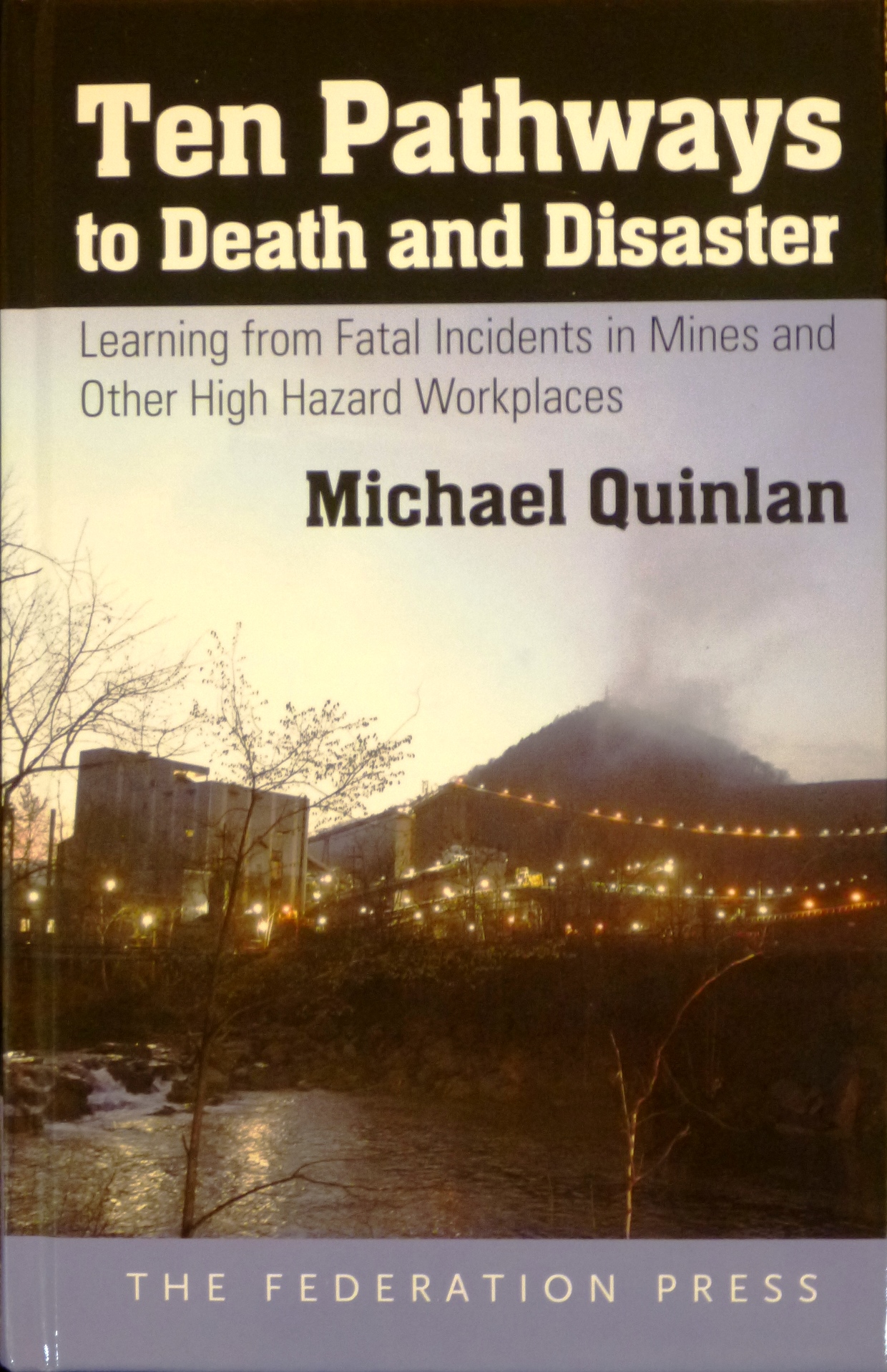Ten Pathways to Death and Disaster
This book is available from The Federation Press. We highly recommend it. In fact it is excellent. It should be mandatory reading for every current and future mine manager and supervisor (and every other management position at a mine, whatever you want to call them). The information analysed from so many incidents and disasters is extraordinary. It is a great piece of work. The information on this page is reproduced with permission from Michael Quinlan, but let it be your motivation for getting a copy of the book. Whilst the rest of this site is about the tradegy from the past, here, Professor Quinlan offers us the path to a safer future. Let us not repeat the mistakes of the past. This book is a great first step to a safer industry.
Why do mine disasters continue to occur in wealthy countries when major mine hazards have been known for over 200 years and subject to regulation for well over a century? What lessons can be drawn from these disasters and are mine operators, regulators and others drawing the correct conclusions from such events? Why is mining significantly safer in some countries than in others? Are the underlying causes of disasters substantially different from those that result in one or two fatalities? This book seeks to answer these questions by systematically analysing mine disasters and fatal incidents in five countries (Australia, Britain, Canada, New Zealand and the USA) since 1992. It finds that there are 10 pattern causes which repeatedly recur in these incidents, namely:

- Design, engineering, technical and maintenance failures,
- Prior warning or causes for alarm ignored,
- Failures in risk assessment,
- Failures in management systems and hazard management plans,
- Failures in auditing,
- Economic pressures compromising safety,
- Failures in regulatory oversight and inspection,
- Workers and others expressing concern prior to the incident,
- Poor management – worker communication and trust,
- Emergency and rescue resources and procedures.
Attachments: